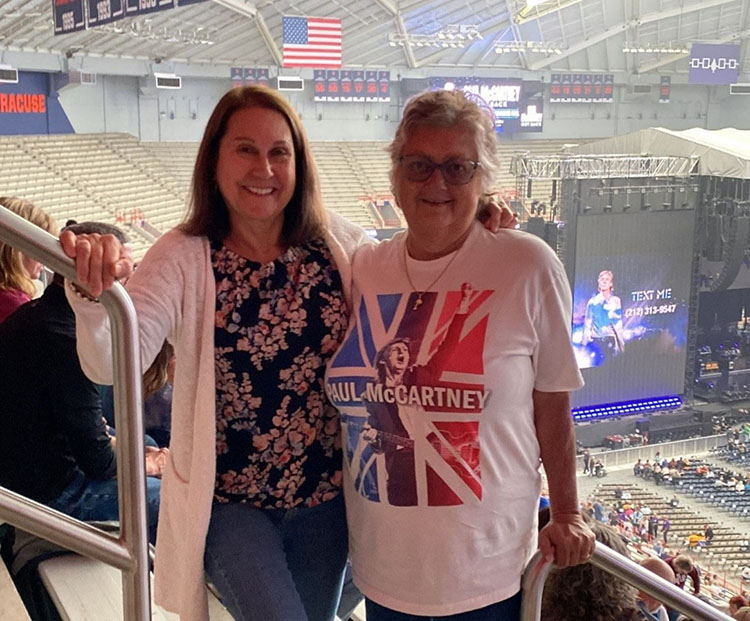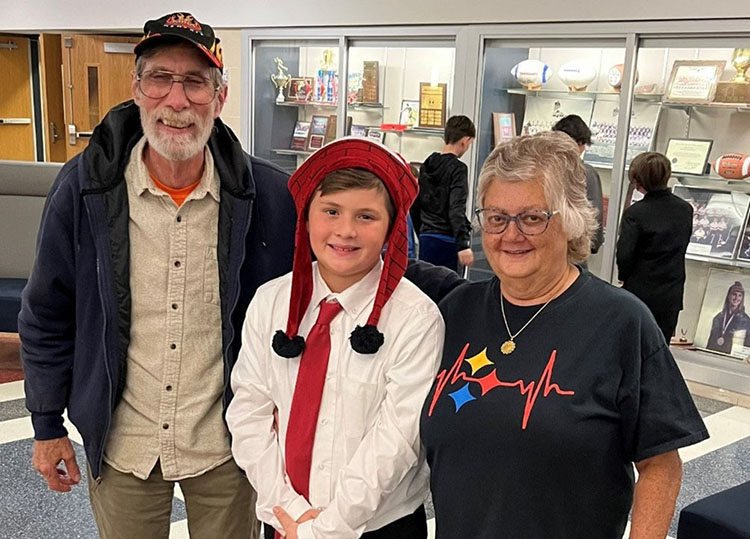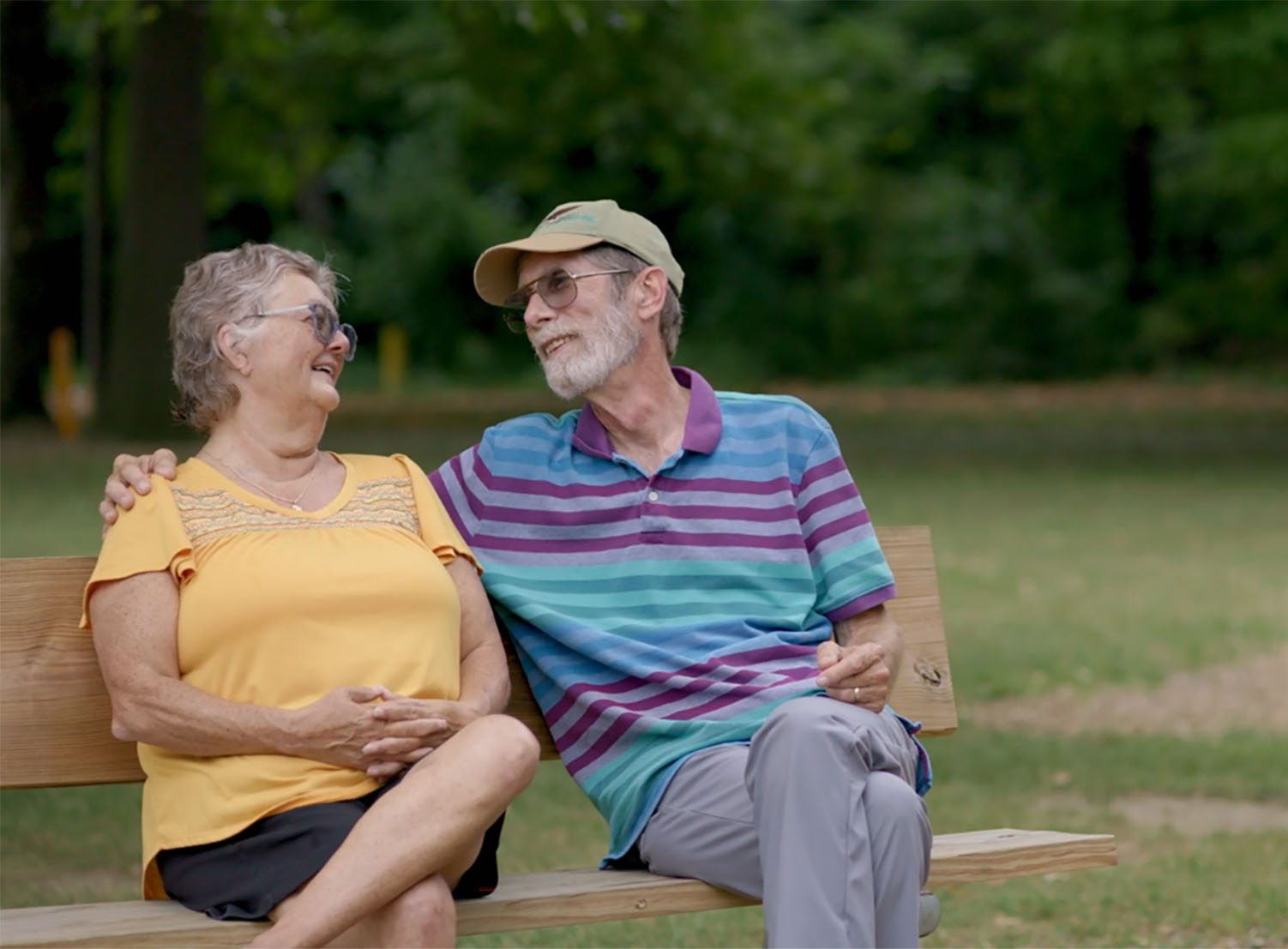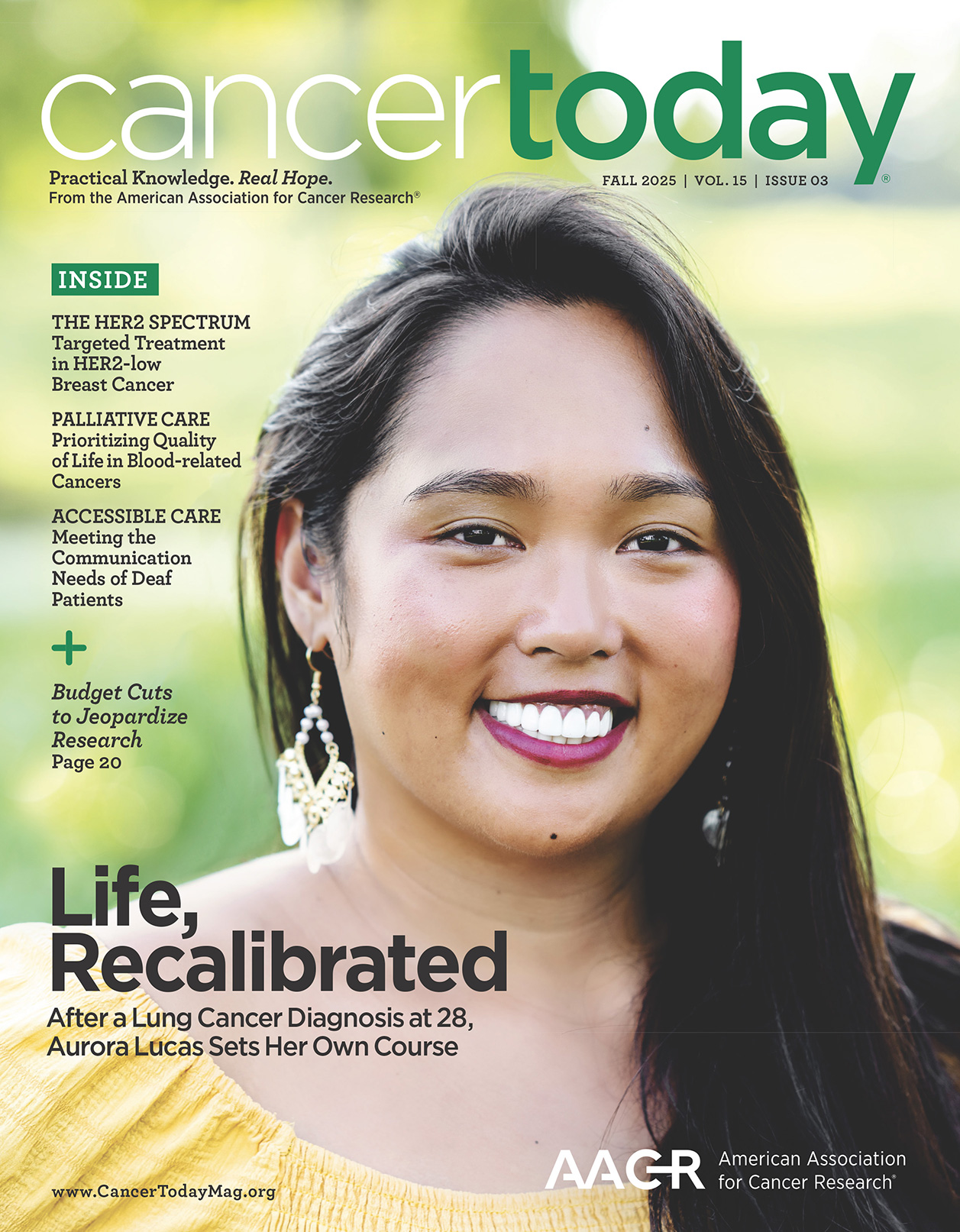For Desiree, retirement was everything she could’ve wanted: She enjoyed an active lifestyle, traveling and spending quality time with the people she valued most—her family. Her days were spent bowling with her husband, Bob, in a weekly league, helping out her four kids and eight grandkids, and cuddling up with her six cats. And, with their shared love of live music, Desiree and Bob also frequently traveled to see their favorite bands perform live.

Desiree’s family was able to help her navigate her treatment and advocate for her while she came to terms with her diagnosis. Photo courtesy of Amgen
One night while watching TV, Desiree’s body suddenly began to tense up and seize. Bob called 911, and she was rushed to the hospital immediately. Desiree woke up to the news that she needed surgery to remove tumors in her brain.
After the surgery, the doctor informed Desiree that she had stage IV non-small cell lung cancer (NSCLC) and started her on an aggressive treatment plan right away. Stage IV cancer is when cancer has spread from the original location to distant parts of the body including her brain.1
“It all happened so fast. I just couldn’t wrap my head around what was going on,” she said. “I had a hard time accepting the diagnosis, thinking, ‘This can’t be happening; this can’t be real.’”
During initial treatment, Desiree leaned on her family for support and guidance as she worked to come to terms with her diagnosis. Her daughter stepped in to help her navigate the process and advocate on her behalf. “In the beginning, my daughter was the one asking the doctor questions because I was overwhelmed and having trouble processing everything,” Desiree said. “I think it’s important to have several people around you, helping do research, asking questions, being in your support system.”
Desiree went through months of treatment to try and fight the cancer but ultimately decided to stop both immunotherapy and chemotherapy. Desiree underwent comprehensive biomarker testing to better understand the makeup of her tumor and the treatment plan options that could target the growth drivers of her cancer.2,3 Armed with the results of biomarker testing, which revealed she had the KRAS G12C mutation, Desiree began a targeted treatment plan at the instruction of her doctor.
KRAS G12C is one of the most common mutations in NSCLC, occurring in about 1 in 8 (~13%) people living with non-squamous NSCLC in Western countries.4 Cancer mutations can be found through biomarker testing, a type of testing that can be done through a tissue biopsy or blood test and identifies a patient’s specific tumor makeup.5,6 Results of biomarker testing can help doctors understand what is driving a patient’s particular cancer to grow and then be used to help inform a personalized treatment plan to specifically target that type of cancer.3,7

Though Desiree’s journey with cancer has been long, she’s enjoying spending time with her grandkids and planning future travels. Photo courtesy of Amgen
When asked about her advice for anyone who receives a cancer diagnosis, Desiree said, “Don’t stop asking questions, and stick up for yourself. If you think something is wrong, you need to address it with someone who can help.”
Today, Desiree enjoys going to her grandkids’ sports games and getting back to her weekly bowling league with Bob.
As for the future, she said, “There’s still a lot of things I want to do, like go to Iceland to see the northern lights; I think that would be amazing. I hope I get there, but for now, I just take it one day at a time. I’m very thankful for every day.”
*Individual results may vary.
KRAS, Kirsten rat sarcoma viral oncogene homolog
If you or a loved one has been diagnosed with lung cancer, ask your health care team about comprehensive biomarker testing since it may help lead to targeted therapy options. For additional information about KRAS G12C in NSCLC, visit KRASG12Candme.com.
©2024 Amgen Inc. All rights reserved.
USA-510-81788
References:
- National Cancer Institute. https://www.cancer.gov/publications/dictionaries/cancer-terms/def/stage-iv-non-small-cell-lung-cancer. Accessed July 30, 2024.
- Sarhadi VK, et al. Biomolecules. 2022;12(8):1021.
- Ahmadzada T, et al. J Clin Med. 2018;7(6):153.
- Data on File, Amgen; 2022.
- Pennell NA, et al. Am Soc Clin Oncol Educ Book. 2019;39:531-532.
- Gregg JP, et al. Transl Lung Cancer Res. 2019;8:291.
- Barlesi F, et al. Lancet. 2016;387:1415-1426.
Cancer Today magazine is free to cancer patients, survivors and caregivers who live in the U.S. Subscribe here to receive four issues per year.
Disclaimer: Sponsored advertising content is written by the advertiser and does not necessarily reflect the views of Cancer Today or the American Association for Cancer Research (AACR). Cancer Today’s editorial staff was not involved in developing or creating the sponsored content. Content on the Cancer Today website is not intended to be a substitute for professional medical advice. For diagnosis or treatment of any medical condition or any questions you may have about a medical condition, please consult your physician or other qualified health care provider. Neither Cancer Today nor the AACR is liable for any loss or damage incurred as a result of reading or following the information or engaging with any of the advertising or sponsored advertising content on the Cancer Today website. The mention of any company, service, product or treatment does not constitute an endorsement by Cancer Today or the AACR.






